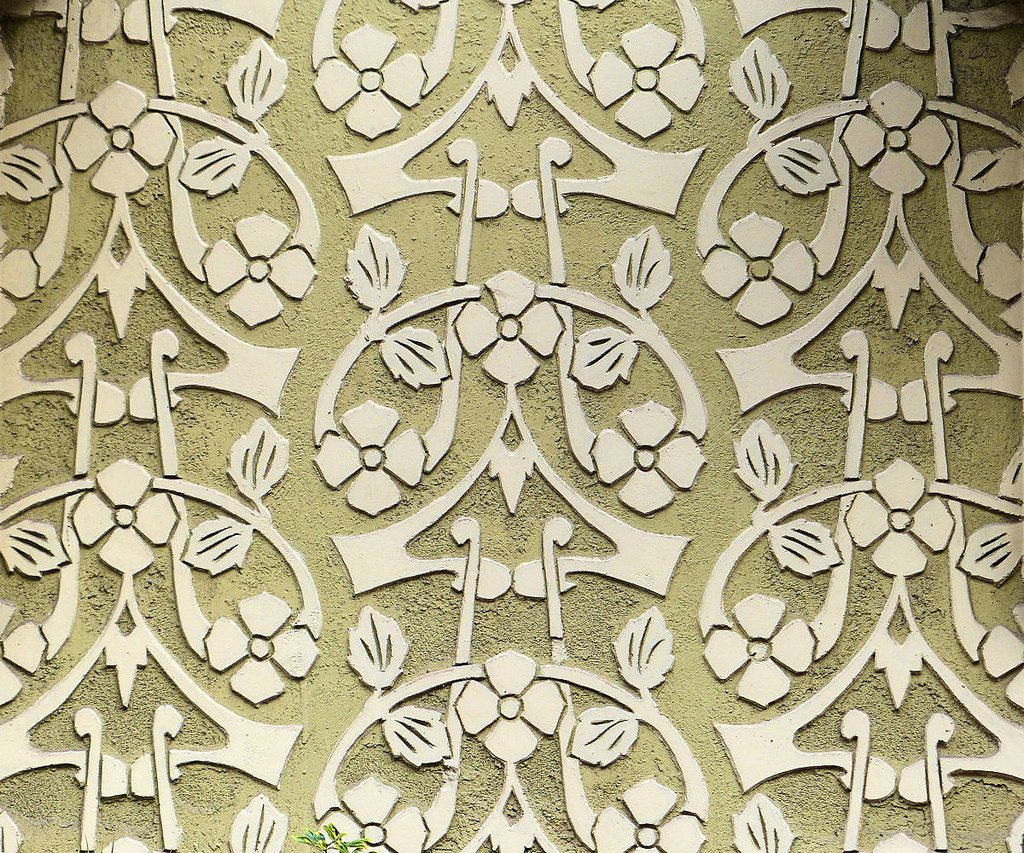#1725. Exquisite Floral Facade Ornamentation: Interplay of Tradition and Modernity
This image showcases an exquisite example of decorative relief ornamentation on a building facade. We're looking at a refined stucco decoration with floral motifs, executed in light olive (background) and cream (relief) tones. The ornament is organized into a clear geometric structure where circular elements connect to form an endless repeating pattern.
Particularly noteworthy is the delicate execution of four-petaled flowers and stylized leaves, which create a sense of lightness despite the materiality of the facade decoration. The relief depth is well-calibrated — sufficient to create an expressive interplay of light and shadow, yet not so deep as to make the decoration appear heavy. This decorative approach to facade design is characteristic of historical architecture, especially Neo-Moorish and Art Nouveau styles, although this specific example has a more universal aesthetic.
Contemporary solutions for private housing can adapt such historical motifs, using both traditional stucco methods and modern materials — polymer decorative elements that are easier to install and maintain. Even fragmentary use of such ornamentation can significantly enrich the visual perception of a building, emphasize an entrance group, or highlight individual architectural elements.
